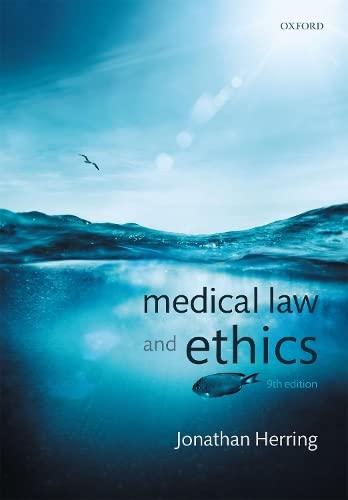Question
Business Law Simulation Exercise for Managers #2: Employment Discrimination John Falstaff v. Revere Furniture Company Business Law Simulation Exercise for Managers: Employment Discrimination YOU MUST
Business Law Simulation Exercise for Managers #2: Employment Discrimination
John Falstaff v. Revere Furniture Company Business Law Simulation Exercise for Managers: Employment Discrimination
- YOU MUST ADVOCATE (DEFEND) either Falstaff or Revere..
- Compose an essay format memorandum that focuses on issue of Revere's potential liability under the ADA and ADAAA. Look to the rubric on what issues you are to cover. Your memorandum should contain:
1) a summary of relevant facts of the dispute;
2) an explanation of each legal issue in the analysis with an application of legal rules or doctrines governing the dispute;
3) a list of all remedies that your side is entitled to;
4) a tenable solution to resolve the dispute in a non-judicial forum.
Your memorandum should articulate arguments that support your side of the case by citing directly from the statute, case points of law and opinion excerpts (use a simple parenthetical citation format with the first name of case and point/excerpt number such as Grindleat Point 2, or Adamsat Excerpt b1 or ADAAA Section 2-2).
- You must also use two update sources (published no earlier than 1-1-2018). I suggest using lexology.com which stores commentary written by law firms on current cases that pertain to business. They must be worked into the paper. Wikipedia is not a source.
- Be sure to explain why you cited a particular point. Start with your strongest argument and give an analysis as to the likelihood of success of each theory.
- In determining a tenable solution, carefully consider the objectives of each party (e.g., For Revere, compliance with the ADA and a productive employee; for Falstaff, his former position as a floor manager with reasonable accommodations).
The Stipulated Facts are designed to have some facts that favor Falstaff's position and some that cut towards Revere's position. Neither side has an advantage. You should not only articulate your own arguments, but also to anticipate alternative arguments using the same facts and cases. You will need to discuss them as part of a persuasive argument.
- This paper is focused Falstaff's claim that his impairment qualifies for protection under the ADA and not on the issues in the fact pattern that could arise regarding issues that are unrelated such as pretext.
- Students sometimes are confused how to use points and facts in their arguments. Students should also be encouraged to factually distinguish any cases that do not support their arguments. That is, tell the reader why one case or the other can't be applied because it is factually different from the Falstaff v. Revere Furniture Company case.
- .
Issue | Questions to ponder when considering what needs to be covered |
Disparate treatment under the McDonnell Douglass standard | To Falstaff:
To Revere:
|
Qualified disability | To Falstaff:
To Revere:
|
Regarded as test | To Falstaff:
To Revere:
|
Ither ways to look at the analysis
Theory of discrimination: What theory of discrimination under the ADA is Falstaff alleging?
- McDonnell-Douglass test: What is necessary to make out an ADA claim under McDonnell-Douglass? Does Falstaff meet all four prongs of the test?
- Qualified disability: Under the current case law in the 14th circuit, is Falstaff's condition a qualified disability? How does theAdams case support Falstaff's claims? How is theAdams case different from Falstaff's? How does the fact that Falstaff's obesity may be related to his lower back injury impact your analysis? In what way does Falstaff's disability interfere with the life activity requirements as described in the ADA?
- ADAAA: How does the passage of the ADAAA impact Revere's liability under the ADA for Falstaff's disability? What parts of the statute are applicable to the Falstaff v. Revere matter?
- Reasonable accommodations. Did Revere take steps to accommodate Falstaff? If not, what accommodations would be reasonable?
- "Regarded as" test: Is there some indication in the Stipulated Facts that Revere supervisors believed that Falstaff could not perform his job tasks even with accommodation? How does the ADAAA impact the "regarded as" analysis.
Step by Step Solution
There are 3 Steps involved in it
Step: 1

Get Instant Access to Expert-Tailored Solutions
See step-by-step solutions with expert insights and AI powered tools for academic success
Step: 2

Step: 3

Ace Your Homework with AI
Get the answers you need in no time with our AI-driven, step-by-step assistance
Get Started


